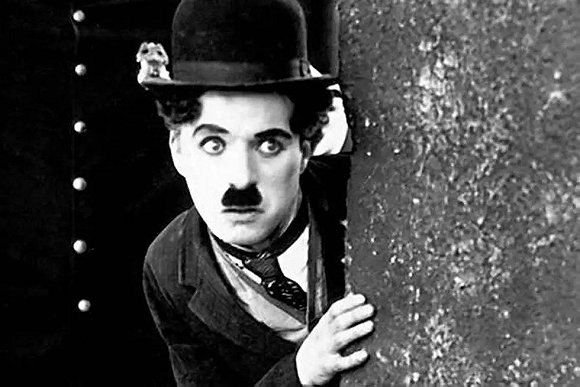Charlie Chaplin was born in 1889 and he is probably the most important actor in the silent comic era. He is still considered as an artistic genius in the early days of world cinema, who influence subsequent generations of film-makers and actors. In many cases, he is known as a household name in the industry. Chaplin was unfortunate to have a turbulent childhood and his parents separated when he was a toddler. The agony and pain of the poverty are reflected in many of his films. Themes in his movies are influenced by experiences and incidents in his younger years.
Chaplin is known for his pantomimic skill, which is well-suited for the silent cinema era. Exaggerated gestures and extreme physical comedy were used in his early comedies; which were incredibly hilarious at the time. He threw bricks and kicked his opponents aggressively in his movies, that bordered on vulgarity if used in today’s movies. The Pilgrim, The Idle Class, The Kid and A Dog’s Life were filmed between 1918 and 1922; or when the world has just recovered from the devastating World War I. He had involvement in production, directing and acting in The Circus, The Gold Rush and A Woman of Paris, which was filmed between 1923 and 1928. City Lights (1931) and Modern Times (1936) were considered as his later masterpieces. The former is noteworthy for balanced elements of sentiments and comedy.
The Great Dictator (1940) was his first real talkie movie, followed by Monsieur Verdoux (1947) and Limelight (1952). The Modern Times was a semi-talkie movie with occasional dialogues and noises from radio and other inanimate objects. The transition was probably necessary, because the audience at the time wasn’t accustomed to listening to dialogues when watching Chaplin’s movies. However, we started to hear Chaplin voices in The Circus (1928). Talkie movies started to become popular in 1927, but Chaplin was against the idea; because pantomimic art was his strength.
Modern Times is a glorious movie and it has clever use of sound effects. It explores an industrial-era problem, the dehumanization of labor; which still happens even in developed countries. It shows the closure of various factories due to economic problems. It reflects problems associated with the Great Depression. To this day, economic cycle still happens and in the more recent economic recession in 2008, we still see the same problems; as millions of workers are affected by the condition.
The world politic also affected Chaplin’s work and the Great Dictator clearly had strong resemblance to Hitler. In 1940, the World War II has progressed for one year; with France overwhelmed by Nazi war machines and Great Britain endured massive air attacks and restrictive submarine blockade. Due to the rising anxiety of the time, The Great Dictator was seen as a much darker comedy with serious satirical messages and overtones.
Limelight was a proper closure to his productive career and it shows the life of a comedian at his declining years. Some of his movies are still relevant to this day.



